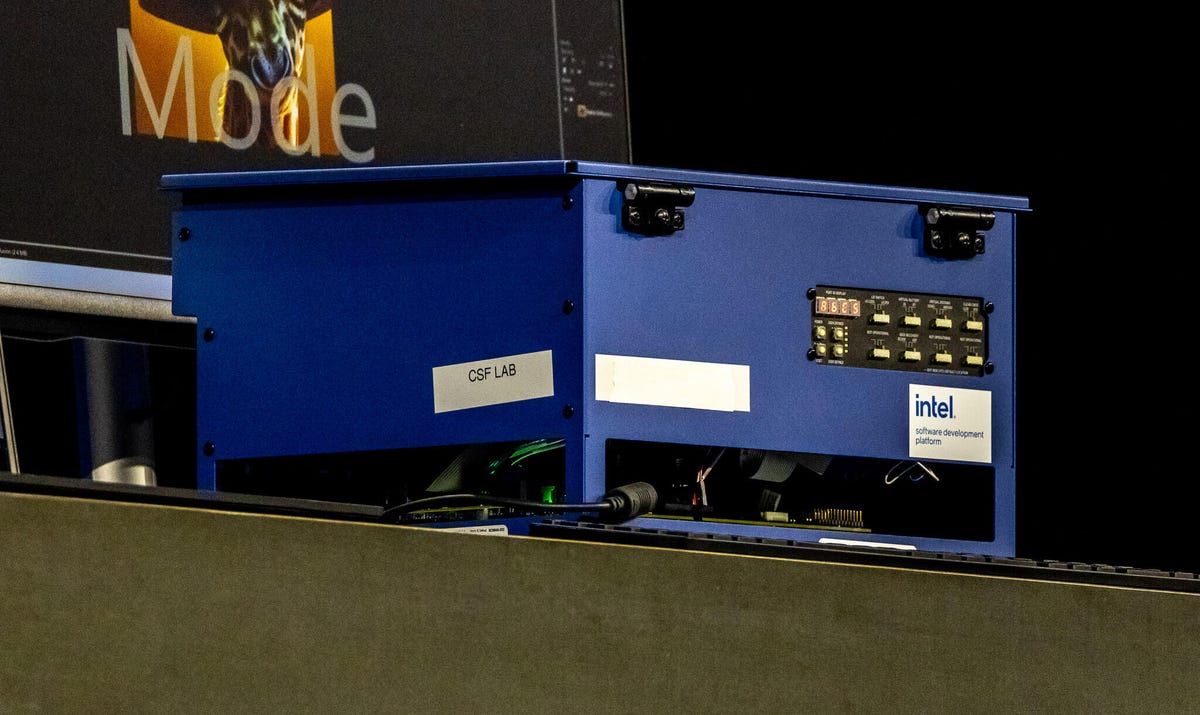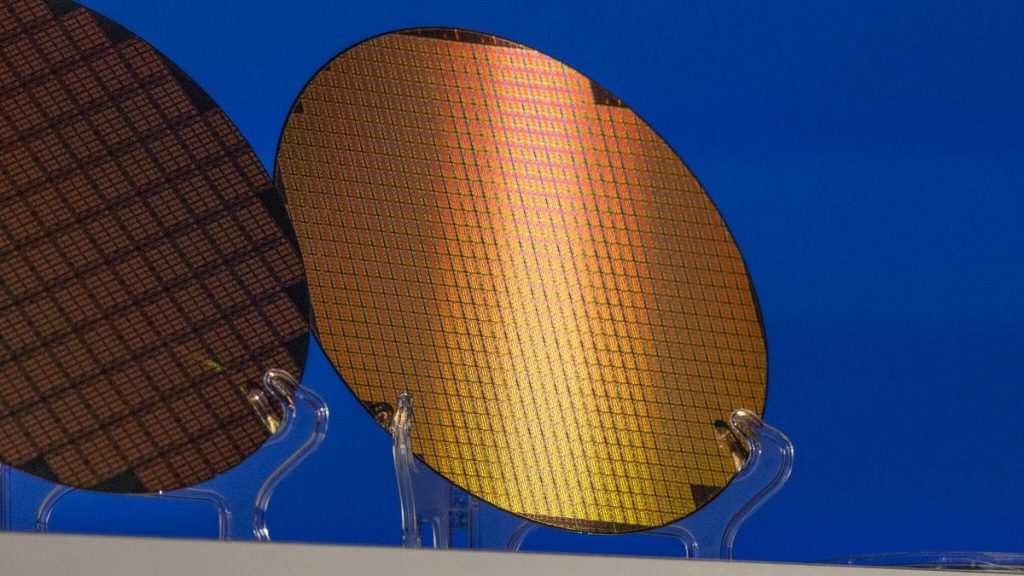Intel held a coming-out party Tuesday for its Meteor Lake, the processor that will go on sale Dec. 14. But if you’re trying to decide whether to stick with Intel-powered Windows laptops or move to Apple’s efficient, powerful new MacBooks, pay attention to the three other processors in the works.
At Intel’s Innovation conference, Chief Executive Pat Gelsinger touted a sequence of new processors due to arrive in 2024 and 2025. First are Arrow Lake and Lunar Lake. Then, in 2025, comes Panther Lake, whose design is «well underway,» Gelsinger said, confirming a rumored code name.
In an effort to show the products aren’t vaporware, Gelsinger demonstrated a prototype Lunar Lake computer, an ungainly blue box marked «Lab CSF» and featuring technical controls like «clear cache» and «virtual battery» you won’t see on your average PC. And he held up a wafer built with Intel 18A, the manufacturing process the company hopes will restore the chipmaking leadership it lost to Taiwan Semiconductor Manufacturing Co. (TSMC) and Samsung.
See also: Inside Intel’s Chip Factory, I Saw the Future. It’s Plain Old Glass
Those and other technology demonstrations bode well for a company that struggled for years, according to CCS Insight analyst James Sanders. «You can definitely tell there is a vibe again that Intel is an engineering-led company again,» Sanders said. «That’s the image they need to portray after years being run by accountants.»

Intel supplied Apple with processors for its Macs for years, but Apple ejected Intel and moved to its own M series of processors, higher-powered variations of the same chips that power iPhones and iPads. The M1 and M2 MacBooks have won plaudits for speed and long battery life, and Intel executives have acknowledged that improving both attributes is a top priority. Intel hasn’t revealed Meteor Lake performance details, but the company promises improvements in processing, graphics and AI performance.
For the processor progression from Meteor Lake through Panther Lake, Intel compares its performance to rivals including Apple on three speed tests: CPUs (central processing units for general computing), GPUs (graphics processing units) and NPUs (neural processing units to speed up AI) within a fixed power budget.
«We look at the aggregate capability that we’re delivering between those three, and we think these platforms get very competitive, the best that Mac or anybody else offers,» Gelsinger said in a press conference at the show. «We’re feeling very, very good about the road map.»
Apple didn’t immediately respond to a request for comment.
Intel fabs start making Panther Lake by March 2024
Intel fabrication facilities, or fabs, will start building the first Panther Lake processors in the first quarter of 2024, Gelsinger said.
«That’s on Intel 18A, the finish line of our five nodes in four years,» he said, referring to the company’s effort to rapidly step through new manufacturing process improvements to become competitive again.
Intel also showed off new Xeon processors for the giant data centers that keep tech giants’ cloud computing services humming, announced that Stability.ai will purchase its Gaudi AI accelerators, and touted new glass substrate technology it expects will make processors faster, more power efficient and larger later in the decade.
AI processors are the biggest processors around, and demand has surged with the explosion in interest in generative AI technology. Intel competitor Nvidia has been the chief beneficiary, but Intel announced that Stability.ai, a generative AI imagery company, will buy a Gaudi-based AI supercomputer with Xeon processors overseeing 4,000 Gaudi AI accelerators.
New steps in Intel chip fabrication
Intel is catching up to its rivals in one chipmaking area, the use of extreme ultraviolet light (EUV) to etch finer features onto silicon wafers. It expects to be ahead, at least a little bit, with the next advancement, called high numeric aperture (high NA) EUV.
That should let chipmakers inscribe even smaller features and fit more transistor circuitry onto a processor. But the higher detail with the more advanced EUV process comes at a cost: the maximum size of processor it can make is half the size as with regular EUV. That’s mostly an issue with large processors like AI accelerators, and processor makers can bundle several «chiplets» into one package to compensate.
Intel expects to get the first EUV machine for high-volume chipmaking at the tail end of 2023, Gelsinger said. The sole supplier is Dutch company ASML. Its Intel 18A process could use high NA, but 18A chips also could be made with conventional EUV and more steps in the manufacturing process.
Gelsinger has been talking up the five-nodes-in-four-years plan for more than two years: Intel 7, Intel 4, Intel 3, Intel 20A and Intel 18A. At Innovation, he described for the first time future advancements in processor manufacturing, showing a road map with three more steps beyond 18A.
Intel 20A and 18A employ technology called gate all around, which Intel brands as RibbonFET, to miniaturize transistors and help keep Moore’s Law ticking. They also use backside power delivery, which Intel brands as PowerVia, to improve efficiency when handling electricity. Intel is working on new versions of both.
«We’re making further improvements on gate all around,» Gelsinger said. «We’re well underway on the next version of PowerVia as well.»
Gelsinger says there are three types of chip manufacturers: «You’re big, you’re niche or you’re dead.» Intel is trying to speed up its chipmaking progress to avoid being squeezed off the leading edge and relegated to making older chips, a fate that IBM and AMD faced in recent years.
«Intel is way too big to be niche,» Gelsinger said, «so we’d better be really big.»
